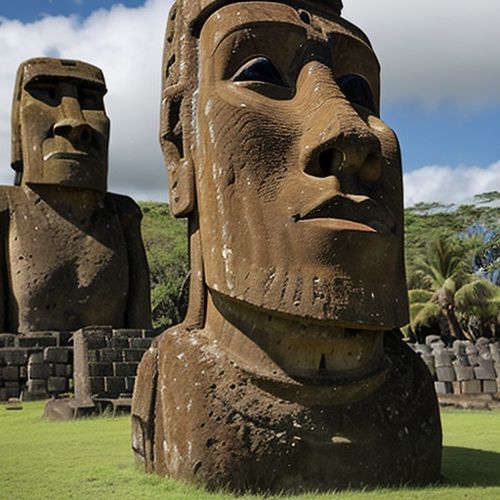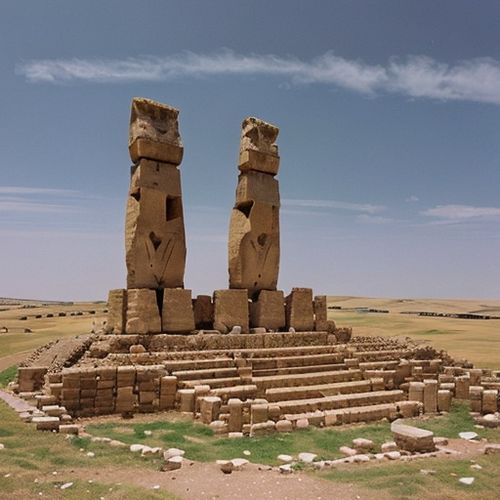The discovery of Ötzi the Iceman in 1991 sent shockwaves through the archaeological community. Preserved for over 5,300 years in the icy peaks of the Ötztal Alps, this Copper Age mummy has become one of the most studied ancient human remains in history. While initial theories about his death varied wildly, recent findings have solidified a grim picture of his final moments – Ötzi was almost certainly murdered, struck down by an arrow to the back that left him bleeding to death alone in the high mountain pass.
The Iceman's Preservation and Initial Examination
When hikers stumbled upon Ötzi's body protruding from melting ice near the Italian-Austrian border, they had no idea they were looking at a prehistoric crime scene. The glacial conditions had mummified his tissues, preserved his clothing and equipment, and even kept remnants of his last meals intact. Early examinations revealed several injuries, including a deep cut on his hand and what appeared to be an arrowhead lodged near his left shoulder. However, the true cause of death remained debated for years, with theories ranging from freezing to ritual sacrifice.
Breakthroughs in Forensic Analysis
Advanced imaging technologies and microscopic analysis in recent years have painted a far more violent picture. High-resolution CT scans showed that the arrowhead had penetrated a major artery near Ötzi's left collarbone, causing catastrophic blood loss. Forensic pathologists noted that such an injury would have led to rapid unconsciousness and death within minutes. The angle of penetration suggests the arrow came from below, possibly fired by an attacker hiding behind rocks as Ötzi climbed upward.
The Murder Weapon and Its Implications
The flint arrowhead remained embedded in Ötzi's body, while the broken shaft had been pulled out – possibly by the victim himself in a futile attempt at self-preservation. Analysis of the arrowhead's composition traced it to a geological source several valleys away, indicating either long-distance trade or that Ötzi had traveled extensively before his death. The sophistication of the weapon suggests his killer was no amateur; this was a calculated assassination rather than a random act of violence.
Blood Evidence and Ötzi's Final Hours
Perhaps most chilling are the discoveries about Ötzi's last desperate moments. Blood residues on his weapons and clothing show he had recently been in combat. His copper axe showed signs of recent use, and DNA analysis revealed blood from at least four other individuals on his gear. Some researchers speculate Ötzi may have been fleeing a violent encounter when he was ambushed from behind. The position of his body suggests he collapsed onto his stomach, too weak from blood loss to continue climbing.
Unanswered Questions and Ongoing Mysteries
While the arrow wound clearly proved fatal, many questions remain about the circumstances surrounding Ötzi's murder. Why was this middle-aged man traveling alone through dangerous high-altitude terrain? Was he a tribal leader, a trader, or an outcast? The contents of his stomach revealed he had eaten a heavy meal about thirty minutes before death – was this his last supper before being hunted down? The lack of any obvious grave goods with the body suggests his companions (if he had any) didn't have the opportunity or inclination to bury him properly.
Cultural Context of Copper Age Violence
Ötzi's violent death provides rare firsthand evidence about conflict in prehistoric Europe. The period around 3300 BCE saw increasing competition for resources as populations grew and copper tools became valuable trade items. Some researchers theorize Ötzi may have been killed over access to alpine copper deposits or as part of a territorial dispute. His well-made tools and weapons indicate he was a person of some status, making him a likely target in whatever conflict claimed his life.
Modern Techniques Rewriting Ancient History
The continuous reevaluation of Ötzi's remains demonstrates how advancing scientific methods can reshape our understanding of the past. What was initially thought to be a natural death or accident is now clearly recognized as a prehistoric homicide. As imaging technologies improve and new analytical methods develop, researchers continue extracting more information from this unique time capsule. Future studies may yet reveal more about Ötzi's community, his movements before death, and perhaps even identify genetic descendants living today.
The Iceman's story has transformed from a fascinating archaeological curiosity into a gripping forensic mystery. His well-preserved body serves not just as a window into Copper Age life, but as a stark reminder that violence and conflict have been part of human experience for millennia. As scientists continue their meticulous examination of Ötzi and his artifacts, each new discovery adds another piece to this ancient puzzle, bringing us closer to understanding the full story behind one of history's oldest cold cases.

By Emily Johnson/Apr 10, 2025

By Sarah Davis/Apr 10, 2025

By Christopher Harris/Apr 10, 2025

By John Smith/Apr 10, 2025

By Ryan Martin/Apr 10, 2025

By Olivia Reed/Apr 10, 2025

By Sarah Davis/Apr 10, 2025

By Victoria Gonzalez/Apr 10, 2025

By Laura Wilson/Apr 10, 2025

By Lily Simpson/Apr 10, 2025

By Grace Cox/Apr 10, 2025

By Emma Thompson/Apr 10, 2025

By Grace Cox/Apr 10, 2025

By Thomas Roberts/Apr 10, 2025

By Laura Wilson/Apr 10, 2025

By Benjamin Evans/Apr 10, 2025

By Megan Clark/Apr 10, 2025